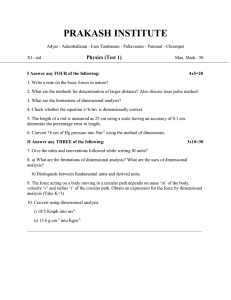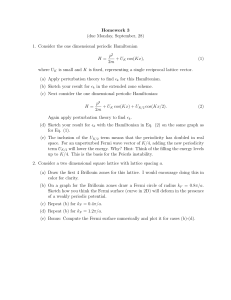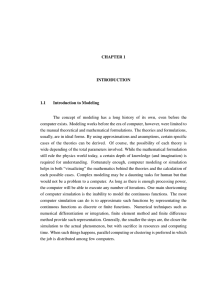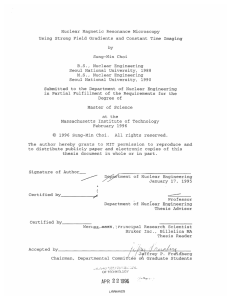Homework 1 (due Wednesday, September, 9)
advertisement
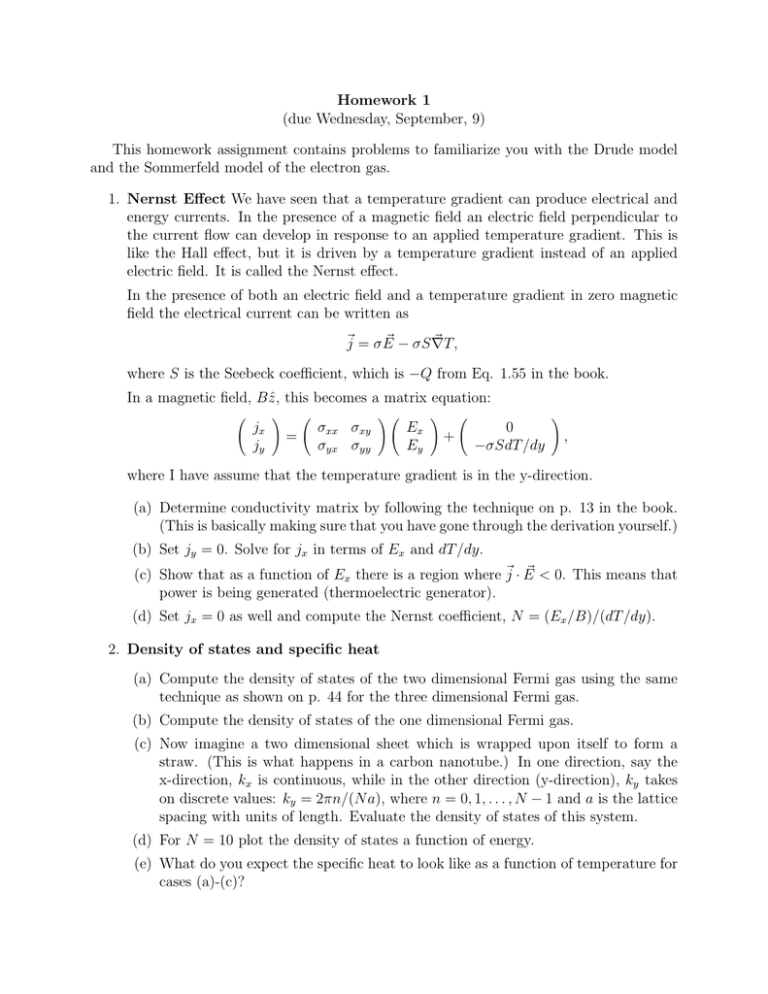
Homework 1 (due Wednesday, September, 9) This homework assignment contains problems to familiarize you with the Drude model and the Sommerfeld model of the electron gas. 1. Nernst Effect We have seen that a temperature gradient can produce electrical and energy currents. In the presence of a magnetic field an electric field perpendicular to the current flow can develop in response to an applied temperature gradient. This is like the Hall effect, but it is driven by a temperature gradient instead of an applied electric field. It is called the Nernst effect. In the presence of both an electric field and a temperature gradient in zero magnetic field the electrical current can be written as ~ − σS ∇T, ~ ~j = σ E where S is the Seebeck coefficient, which is −Q from Eq. 1.55 in the book. In a magnetic field, B ẑ, this becomes a matrix equation: jx jy ! = σxx σxy σyx σyy ! Ex Ey ! + 0 −σSdT /dy ! , where I have assume that the temperature gradient is in the y-direction. (a) Determine conductivity matrix by following the technique on p. 13 in the book. (This is basically making sure that you have gone through the derivation yourself.) (b) Set jy = 0. Solve for jx in terms of Ex and dT /dy. ~ < 0. This means that (c) Show that as a function of Ex there is a region where ~j · E power is being generated (thermoelectric generator). (d) Set jx = 0 as well and compute the Nernst coefficient, N = (Ex /B)/(dT /dy). 2. Density of states and specific heat (a) Compute the density of states of the two dimensional Fermi gas using the same technique as shown on p. 44 for the three dimensional Fermi gas. (b) Compute the density of states of the one dimensional Fermi gas. (c) Now imagine a two dimensional sheet which is wrapped upon itself to form a straw. (This is what happens in a carbon nanotube.) In one direction, say the x-direction, kx is continuous, while in the other direction (y-direction), ky takes on discrete values: ky = 2πn/(N a), where n = 0, 1, . . . , N − 1 and a is the lattice spacing with units of length. Evaluate the density of states of this system. (d) For N = 10 plot the density of states a function of energy. (e) What do you expect the specific heat to look like as a function of temperature for cases (a)-(c)?


